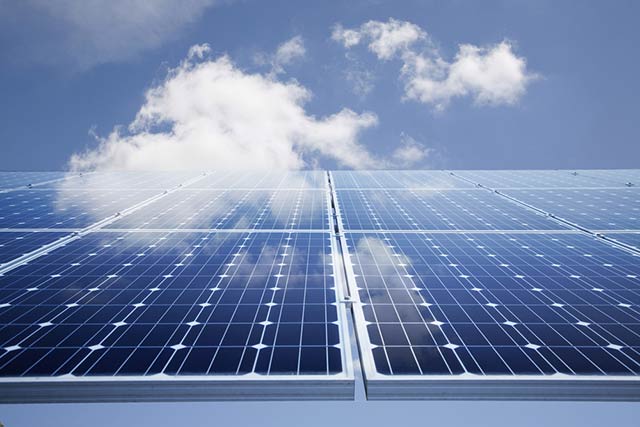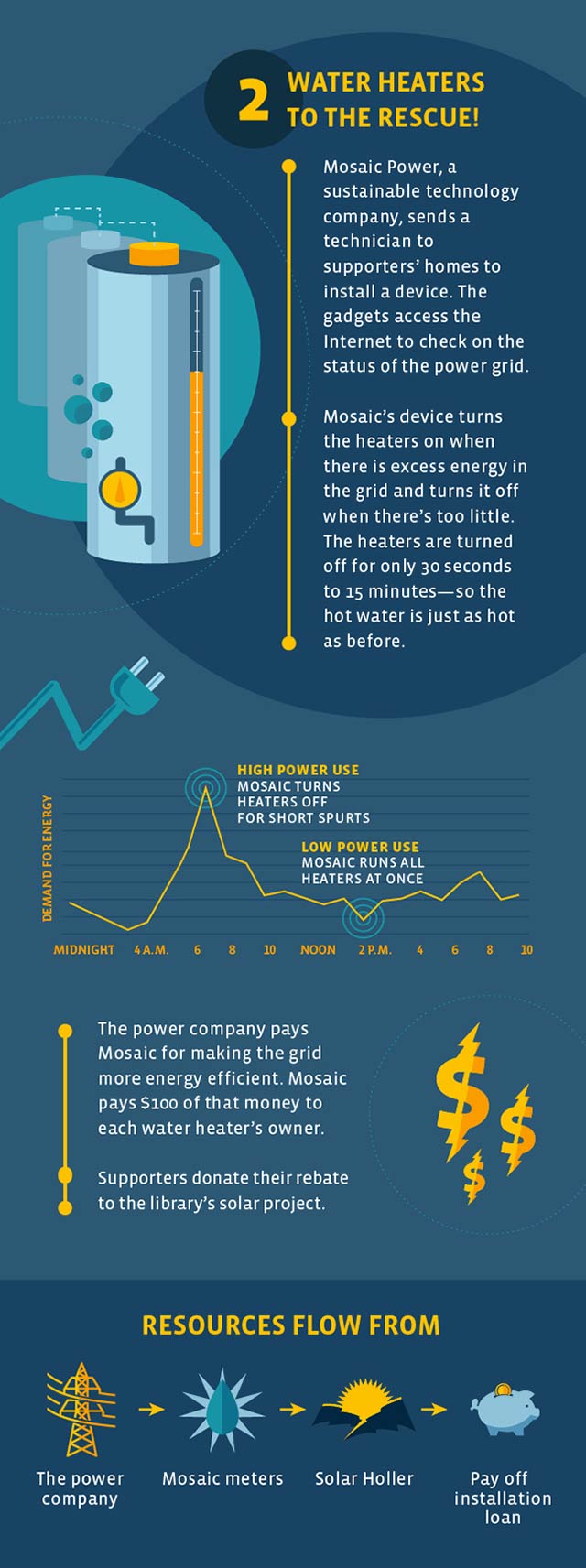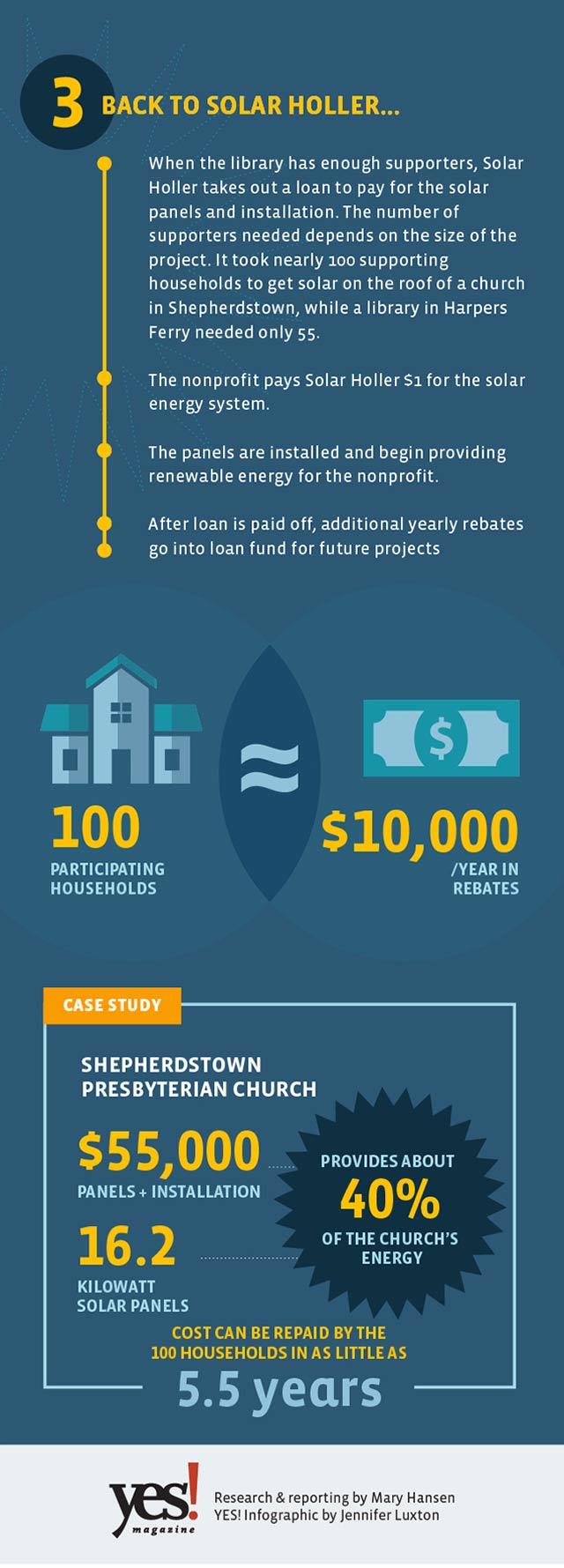
Harpers Ferry, West Virginia, has a lot to offer American history buffs. The town is the site of militant abolitionist John Brown’s 1859 raid on the national Armory, and the historic downtown buildings and brick streets have been lovingly restored. But Harpers Ferry isn’t just about the past. It’s also home to an affordable new approach to crowd-funding solar power projects.
West Virginia might not be the first place that comes to mind when innovations in solar power are discussed. This is coal country, and more than 95 percent of the state’s energy came from coal-fired power plants in 2014.
However, after decades of dealing with environmental consequences of coal and a declining number of mining jobs, many West Virginians are interested in solar’s promise. The cost of solar panels has declined dramatically in recent years, but installations remain financially out-of-reach for many communities in central Appalachia, where poverty rates in some counties are about 60 percent more than the national average.
But financing the 12 solar panels that currently grace the local library’s roof—a $15,000 project—was not a problem because the cost to the library was only $1. That’s thanks to a partnership with Solar Holler, a social venture firm that invests in solar for nonprofits in West Virginia.
Solar Holler uses crowd-funding to finance solar energy systems. Instead of making cash contributions, supporters donate the rebates they earn from installing an energy-saving control device on their water heaters.
 (Graphic: Jennifer Luxton)
(Graphic: Jennifer Luxton)
While the cost can’t really be beat, the campaign in Harpers Ferry did take a couple of months. The library worked with a Sierra Club-supported local environmental group, Sustainable Bolivar-Harpers Ferry. Members of that group, like local shop-owner Martha Ehlman, went through the two towns explaining the system and asking residents to install the devices and pledge their rebates to the library.
“Coal has helped us in the past,” Ehlman says. “Both my grandfathers were coal miners. But that day has come and gone.”
The group hosted a meeting in early September to answer questions like whether the control devices damage water heaters or whether they leave residents with cold showers. Thankfully, Ehlman says, the answer to both questions was no.
By November, the group had 55 supporters. Solar Holler paid for the panels and installation with a bank loan, and the fully functional array was dedicated in a ceremony in early April. Dan Conant, the founder of Solar Holler, points out that the process was less intensive than a conventional fundraiser. More importantly, it didn’t rely on supporters to pony up any cash.
“We could have done a [traditional fundraising] campaign,” he says. “But how would that help churches or schools or nonprofits in less well-off areas, where they don’t have the money laying around?”
Conant is originally from Jefferson County, West Virginia. He left the state to work in solar energy and helped to finance different solar installations in Washington, D.C., and Vermont.
But he always felt the pull to return home and tackle the challenge of bringing renewable energy to the state where “Big Coal” reigns and residents enjoy some of the lowest electricity rates in the country.
He talks passionately about the economic climate in West Virginia and the “brain drain” the state is experiencing, a phenomenon where talented residents leave the state to find better jobs elsewhere. It’s clear from the urgency in his voice that this is personal for him.
“How do we transition our state so that we can continue providing energy and being an economic force in America, over the coming century?” Conant asks. “How do we create these new jobs that will actually keep native West Virginians like me at home?”
At the center of Conant’s model is a partnership with Mosaic Power, the company that invented, manufactures, and installs the heater-control devices. This is the first time Mosaic Power has participated in a project that supports solar energy.
Laurie Vaudreuil, an electrical engineer and a co-founder of Mosaic Power, points out that the partnership makes sense because her company’s devices not only make heaters more energy efficient, but make the power grid better suited for renewable energy as well.
How It Works
Mosaic Power’s technology helps to address a key problem in building up renewable energy. Unlike energy from fossil fuels, the capacity of solar and wind tends to fluctuate over the day like when a cloud covers the sun or the wind suddenly stops. That means a grid that’s dependent on renewables might have trouble providing enough energy during peak hours. In a worst-case scenario, the problem could cause brownouts.
One way to solve that problem is to cut down on the amount of energy needed during those peaks. So Mosaic Power’s device uses an Internet connection to access information from the grid about energy supply and demand, and coordinate the use of hundreds of water heaters at once. When there is too much demand, it shuts off the water heaters for a period that ranges from 30 seconds to 15 minutes. And when there is excess energy, it turns the water heaters on.
 (Graphic: Jennifer Luxton)
(Graphic: Jennifer Luxton)
The real algorithm is a bit more complex, but that’s the general idea. And while controlling just a few water heaters at a time wouldn’t make a difference, Mosaic Power has installed about 350 of the devices across Maryland and West Virginia, making the impact significant.
Being able to control a lot of energy demand almost instantaneously is an innovation that the local electricity companies will pay for. PJM Interconnection, which sells wholesale electricity and manages an electricity grid in 13 states, including West Virginia, pays Mosaic Power a fee for this service. Mosaic Power then offers a $100 yearly rebate to the households that have the controls installed.
In a Solar Holler project, those rebates are key. The supporters of a church or library sign up for Mosaic Power’s program, but opt to donate their $100 rebates to pay for solar panels.
Conant estimates that, for a typical project, it will take between three and five years to pay off the solar systems. Once the loans are paid off, the money that keeps flowing in from rebates will go into a revolving loan fund for future projects.
 (Graphic: Jennifer Luxton)
(Graphic: Jennifer Luxton)
First Steps
Gretchen Frye, the director of the Bolivar-Harpers Ferry Library, acknowledges that the model takes some time to explain.
“It almost sounds to good to be true,” she says. “The library board just had to initially understand how it worked. And the community too.”
It also helped that library supporters could look to a successful example nearby. Solar Holler’s first project was a 60-panel system for the Shepherdstown Presbyterian Church, just north of Harpers Ferry. About 100 church supporters had water heater controls installed to finance the $55,000 project.
The panels on the Shepherdstown church are projected to produce between 19,000 and 20,000 kilowatt-hours of electricity per year, or about 45 percent of the church’s electricity needs. For the library in Harpers Ferry, the electricity from solar will cover about 5 percent.
That may not sound like much. But Danny Chiotos, an organizer for Sustainable Bolivar-Harpers Ferry, sees it as a concrete example of how to transition to renewable energy for both towns.
“Before, it was largely talk about how great solar would be,” Chiotos says. “Even though the power is piddly compared to a coal-fired power plant, they are real projects that are first steps to really grow solar power in West Virginia.”
And growing it is. Conant says he’s received calls from every corner of the state to partner with Solar Holler. For him, the project is the first step toward a larger transition. And the fact that it’s based in one of the most fossil-fuel dependent states in the country just means that the work will only get easier from here.
“If you can [make solar energy viable] in West Virginia,” he says. “You can do it anyplace else in the country.”
Join us in defending the truth before it’s too late
The future of independent journalism is uncertain, and the consequences of losing it are too grave to ignore. To ensure Truthout remains safe, strong, and free, we need to raise $44,000 in the next 6 days. Every dollar raised goes directly toward the costs of producing news you can trust.
Please give what you can — because by supporting us with a tax-deductible donation, you’re not just preserving a source of news, you’re helping to safeguard what’s left of our democracy.